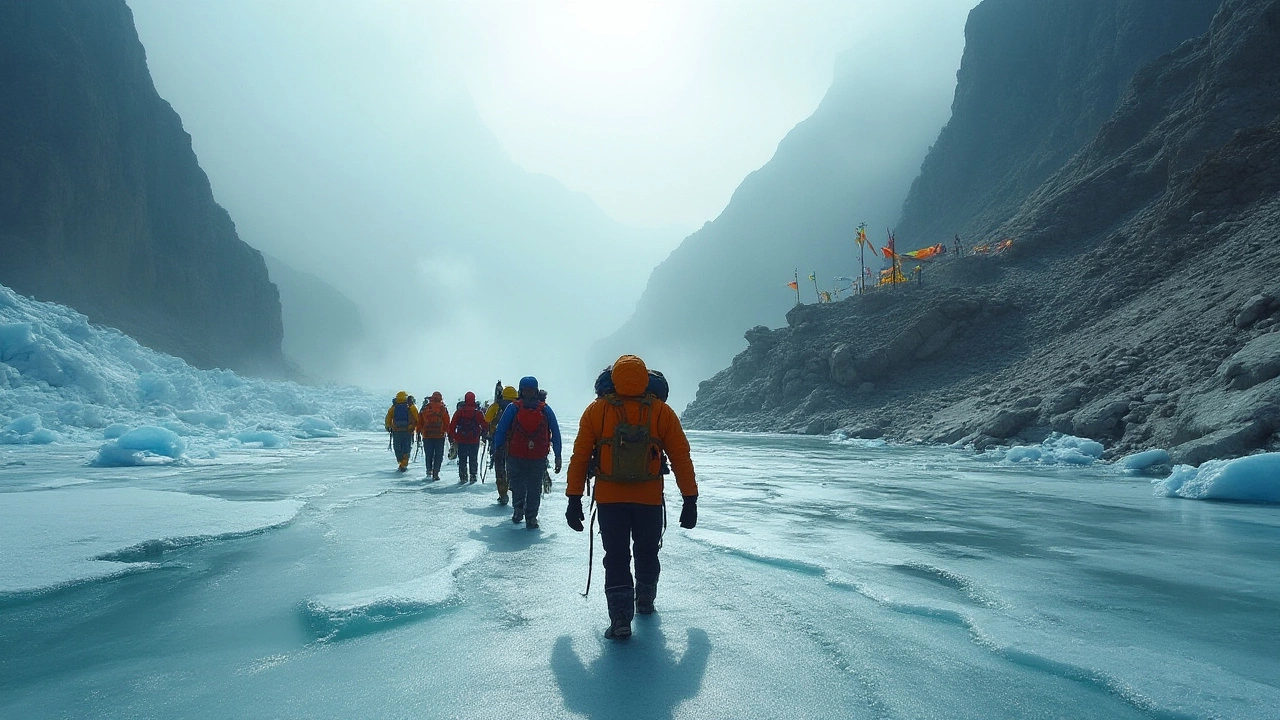Scariest Trek in India: Dangerous Trails and Survival Tips
When people talk about the scariest trek in India, a high-altitude journey that tests physical limits and mental resolve, they’re not exaggerating. It’s not just about climbing high—it’s about walking along knife-edge ridges with sheer drops on both sides, crossing frozen rivers with no railings, and dealing with sudden blizzards that turn trails into whiteout nightmares. This isn’t a guided walk in the park. It’s a battle against nature’s rawest forces, and only a few trails in the Himalayas earn this reputation.
One of the most feared routes is the Roopkund trek, a high-altitude trail in Uttarakhand known for its skeletal remains and unpredictable weather. At 16,500 feet, the air is so thin that even strong hikers struggle to breathe. The final ascent crosses a narrow ridge where one misstep means a fall of hundreds of feet. Then there’s the Kedarkantha trek, a popular but deceptive route where snowstorms can trap you without warning. Many think it’s beginner-friendly—until the wind hits and visibility drops to zero. And let’s not forget the Great Himalayan Trail, a 4,500-kilometer stretch that spans the entire Himalayan range. Even sections of it are so remote that rescue teams take days to reach you.
What makes these treks truly terrifying isn’t just the terrain—it’s the isolation. No cell service. No shops. No backup. You carry everything, including the fear. A sprained ankle on the Roopkund ridge isn’t just painful—it’s life-threatening. A sudden snowstorm on Kedarkantha can turn a three-day hike into a survival ordeal. And if you’re not prepared for altitude sickness, hypothermia, or rockfall, you’re not just risking your trip—you’re risking your life. That’s why hiring a local guide isn’t optional. They know the hidden crevasses, the safe crossing points, and when to turn back. They’ve seen what happens when people ignore the signs.
If you’re thinking of tackling one of these trails, ask yourself: Are you ready for the silence that comes when the wind dies? For the moment when your legs give out and the only sound is your own heartbeat? The scariest trek in India doesn’t care if you’ve hiked ten mountains before. It only cares if you’re prepared for the one that could be your last. Below, you’ll find real stories, hard-won tips, and firsthand accounts from those who’ve walked these paths—and lived to tell the tale.
